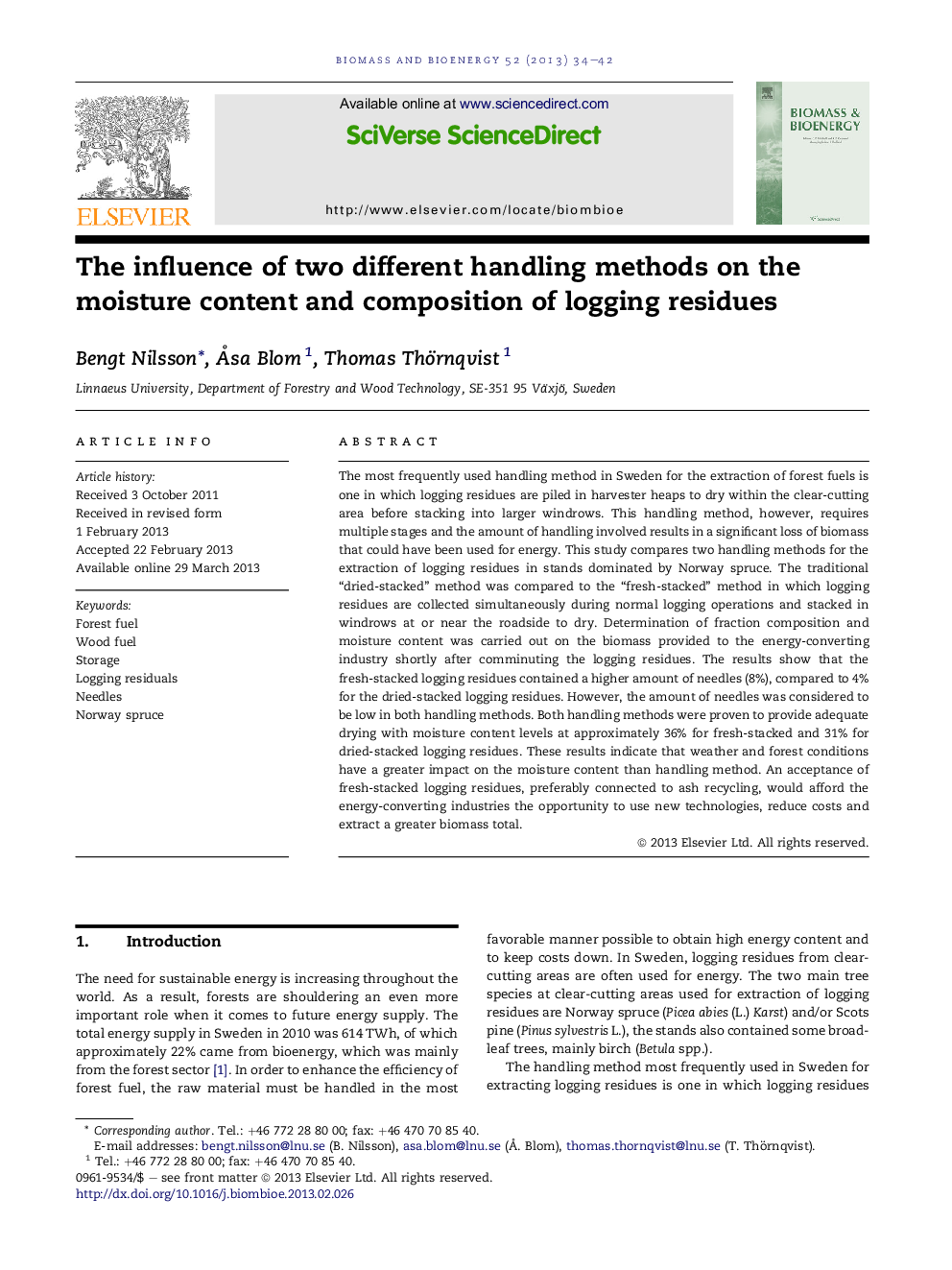| کد مقاله | کد نشریه | سال انتشار | مقاله انگلیسی | نسخه تمام متن |
|---|---|---|---|---|
| 677061 | 1459841 | 2013 | 9 صفحه PDF | دانلود رایگان |

The most frequently used handling method in Sweden for the extraction of forest fuels is one in which logging residues are piled in harvester heaps to dry within the clear-cutting area before stacking into larger windrows. This handling method, however, requires multiple stages and the amount of handling involved results in a significant loss of biomass that could have been used for energy. This study compares two handling methods for the extraction of logging residues in stands dominated by Norway spruce. The traditional “dried-stacked” method was compared to the “fresh-stacked” method in which logging residues are collected simultaneously during normal logging operations and stacked in windrows at or near the roadside to dry. Determination of fraction composition and moisture content was carried out on the biomass provided to the energy-converting industry shortly after comminuting the logging residues. The results show that the fresh-stacked logging residues contained a higher amount of needles (8%), compared to 4% for the dried-stacked logging residues. However, the amount of needles was considered to be low in both handling methods. Both handling methods were proven to provide adequate drying with moisture content levels at approximately 36% for fresh-stacked and 31% for dried-stacked logging residues. These results indicate that weather and forest conditions have a greater impact on the moisture content than handling method. An acceptance of fresh-stacked logging residues, preferably connected to ash recycling, would afford the energy-converting industries the opportunity to use new technologies, reduce costs and extract a greater biomass total.
► This study compared two different handling methods for logging residues in Sweden.
► The traditional handling method “dried-stacked” were compared to “fresh-stacked”.
► In both handling methods the amount of needles was considered to be low.
► The both handling methods provided an adequate drying of the logging residues.
► “Fresh-stacked” logging residues would effective the extraction of forest fuel.
Journal: Biomass and Bioenergy - Volume 52, May 2013, Pages 34–42